15 Beautiful Images from the 2024 Milky Way Photographer of the Year
![]()
Capture the Atlas has revealed the 25 winners of the seventh annual Milky Way Photographer of the Year photo contest have been unveiled, showcasing the best Milky Way images from shooters all around the world.
Of the 25 winners, PetaPixel has selected 15 to feature in this article, alongside a short description of each image. All 25 images are available to view on Capture the Atlas.
‘Lightning Lake’ by Tom Rae
Tom Rae captured this beautiful image in Mount Cook National Park in New Zealand. The mountain, Aoraki/Mount Cook, is coated with winter snow, which Rae says are “rare alpine weather conditions” at the location.
“Upon reaching the lake, the scene that unfolded made me feel like I had landed on another planet,” the photographer explains. “This night, among many spent documenting this incredible part of the world, stands out for me.”
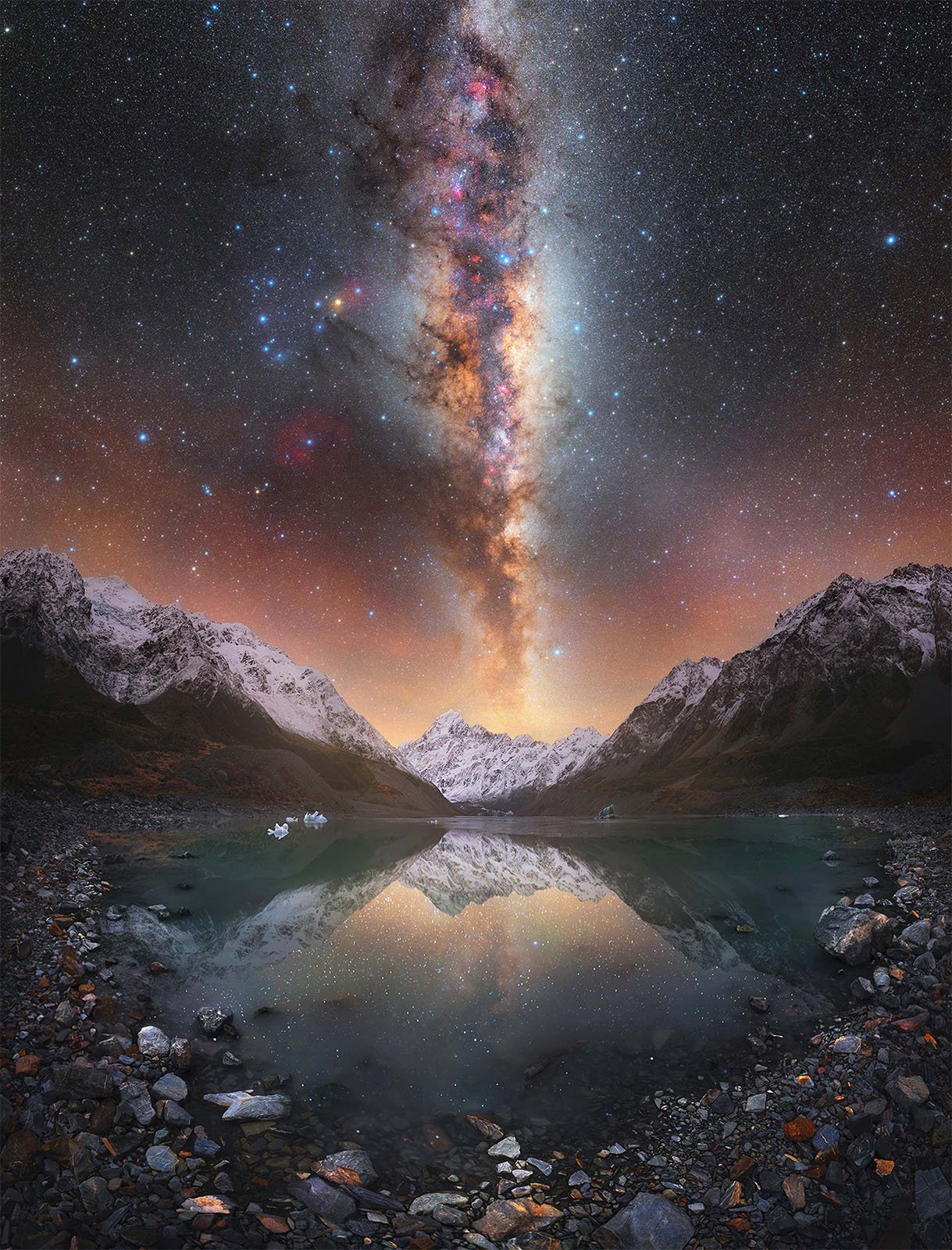
“The image features icebergs in the cyan-blue glacial lake, red airglow painting the sky, and the glow of billions of stars in the Milky Way — a glimpse into the vastness beyond,” Rae continues.
Rae explains that the image is a massive panorama and focus stack, with the sky comprising 17 individual photos and the foreground built using 18 frames. Rae used a Nikon Z6 camera modified for astrophotography.
‘ The Lion’s Den’ by Lorenzo Ranieri Tenti
Photographer Lorenzo Ranieri spent an entire afternoon in the Atacama Desert in Chile looking for potential Milky Way photo compositions. He finally found this one, located in dangerous mountain lion territory.
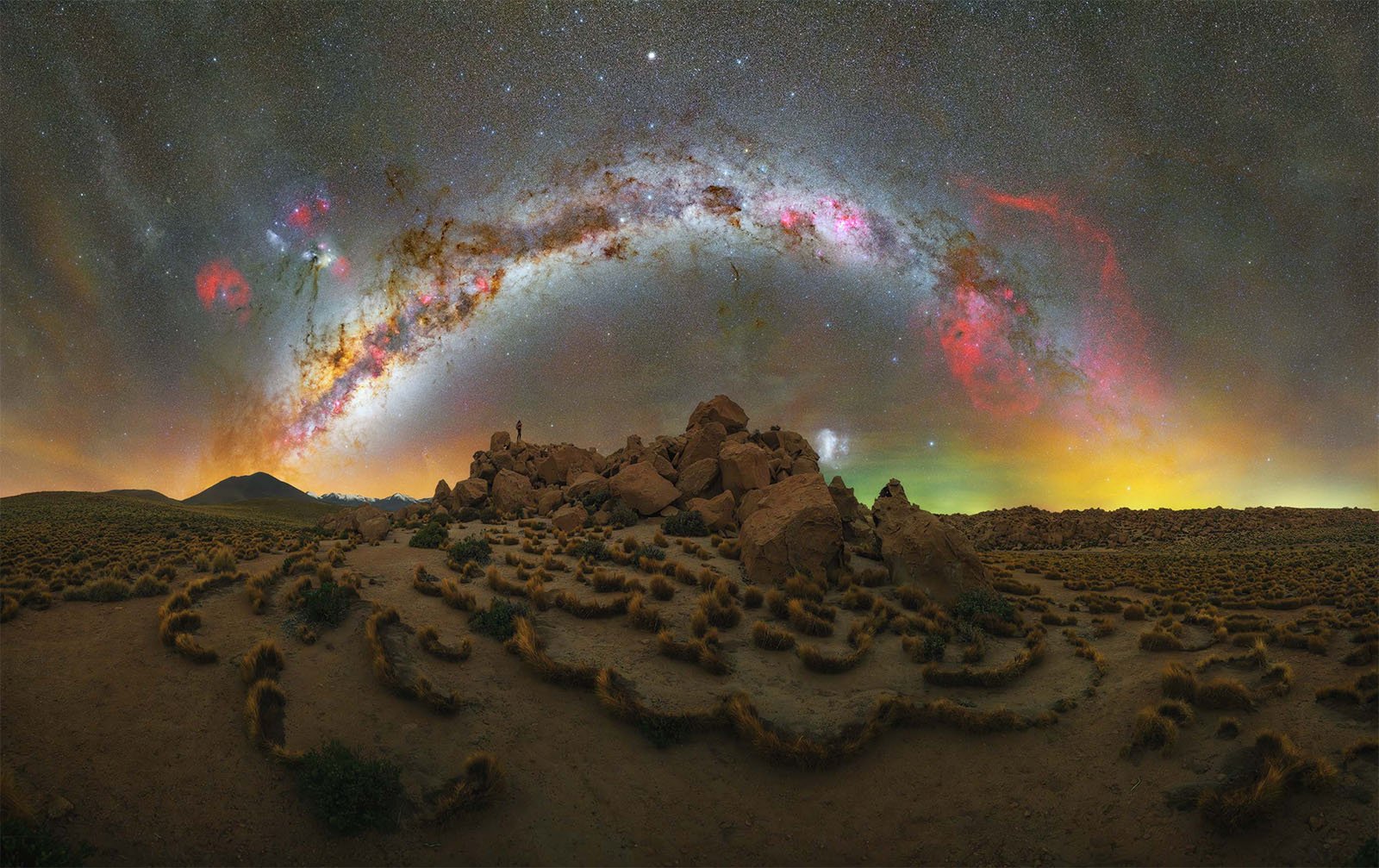
“The area was littered with bones of small animals and footprints of a significant size, indicating the presence of wildlife not typically associated with peaceful sheep. Spending the night there was admittedly a bit nerve-wracking, but the opportunity to photograph such beauty made it worthwhile,” Ranieri says.
Like Rae’s shot above, Ranieri crafted a panorama. In this case, the sky was shot at a 35mm focal length over several frames, while the foreground was shot at 14mm and focus-stacked.
‘ Blue Lagoon Under the Stars’ by Yuri Beletsky
This is another photo shot in the Atacama Desert, although this time by photographer Yuri Beletsky.
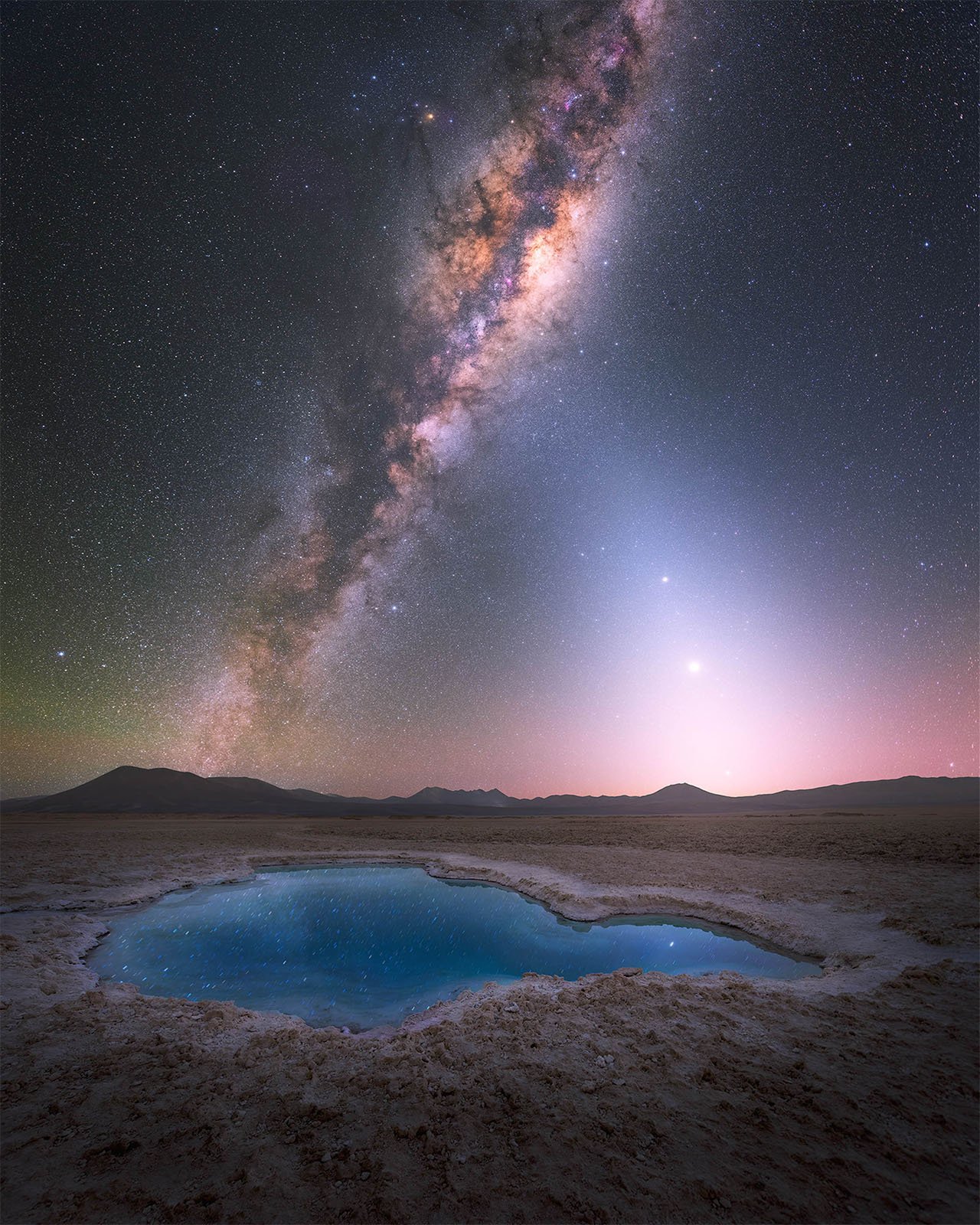
“I captured this view at one of the remote sites of the Atacama Desert in Chile. The Galactic Center was already shining high in the sky, with the Zodiacal light beautifully complementing it on the right,” says Beletsky. “The blue color was as real as the stars in the sky, adding a touch of magic to the scene. It was an absolutely incredible experience!”
This is also another panoramic image, although comprised of just three frames — two of the sky, which were star-tracked, and a single foreground image.
‘Bluff Hut’ by Rachel Roberts
Rachel Roberts captured this panoramic image in the Mungo River Valley in New Zealand.
“Only accessible by a challenging hike or helicopter flight, I had no intention of ending up here, as I had a different shoot planned at another hut. However, with weather closing in at my intended location and no backup plan, I trusted the chopper pilot to choose the best spot for clear skies that evening,” Roberts explains. “Thankfully, he didn’t disappoint, and I was able to capture the Milky Way arching majestically over the hut from one of the darkest places on the planet.”
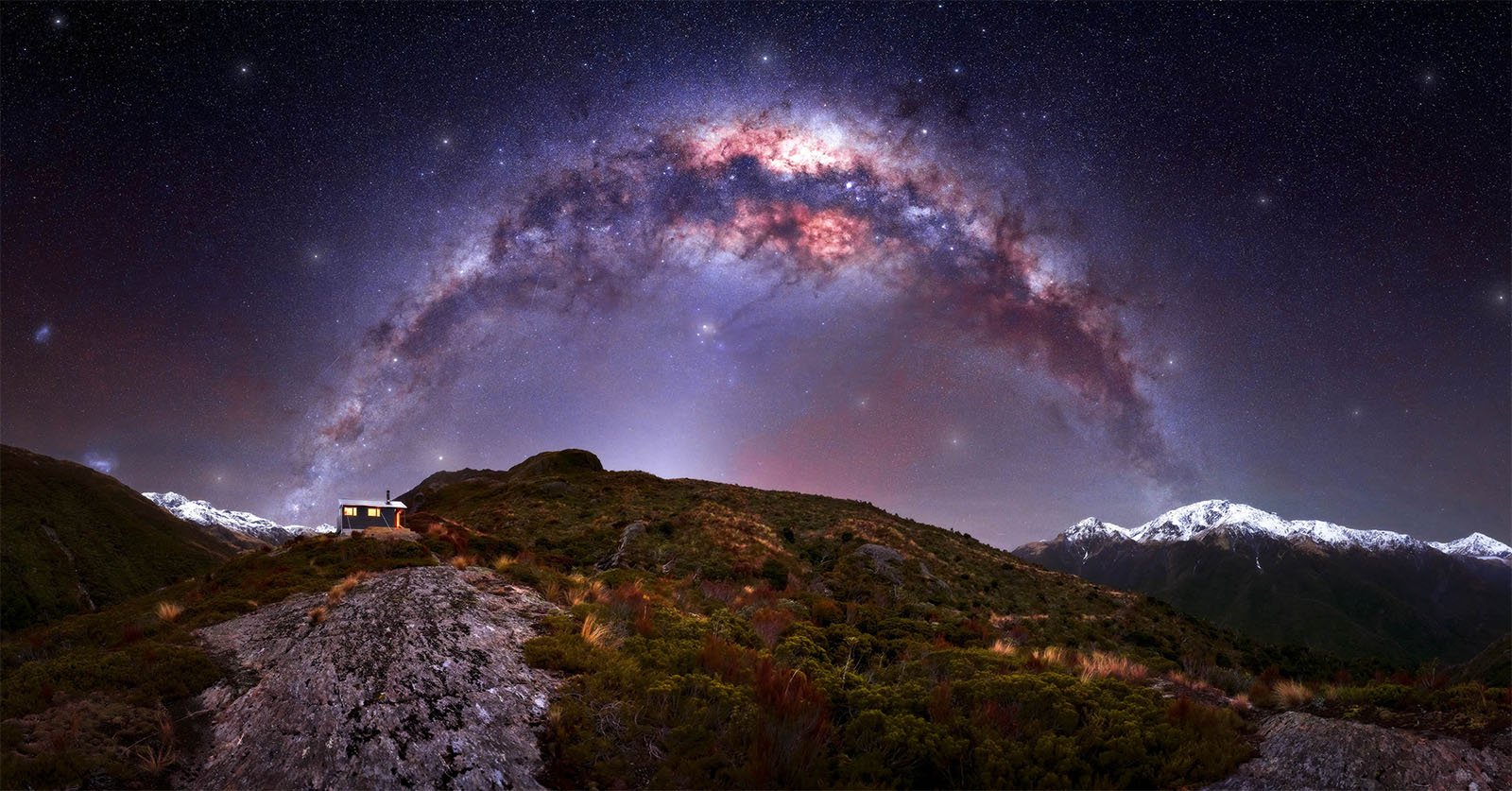
‘ Atmospheric Fireworks’ by Julien Looten
This 180-degree panorama shot at the foot of a medieval castle in France shows exceptional airglow.
“This natural phenomenon occurs due to a chemical reaction in the upper atmosphere, emitting faint light known as chemiluminescence,” Looten explains.
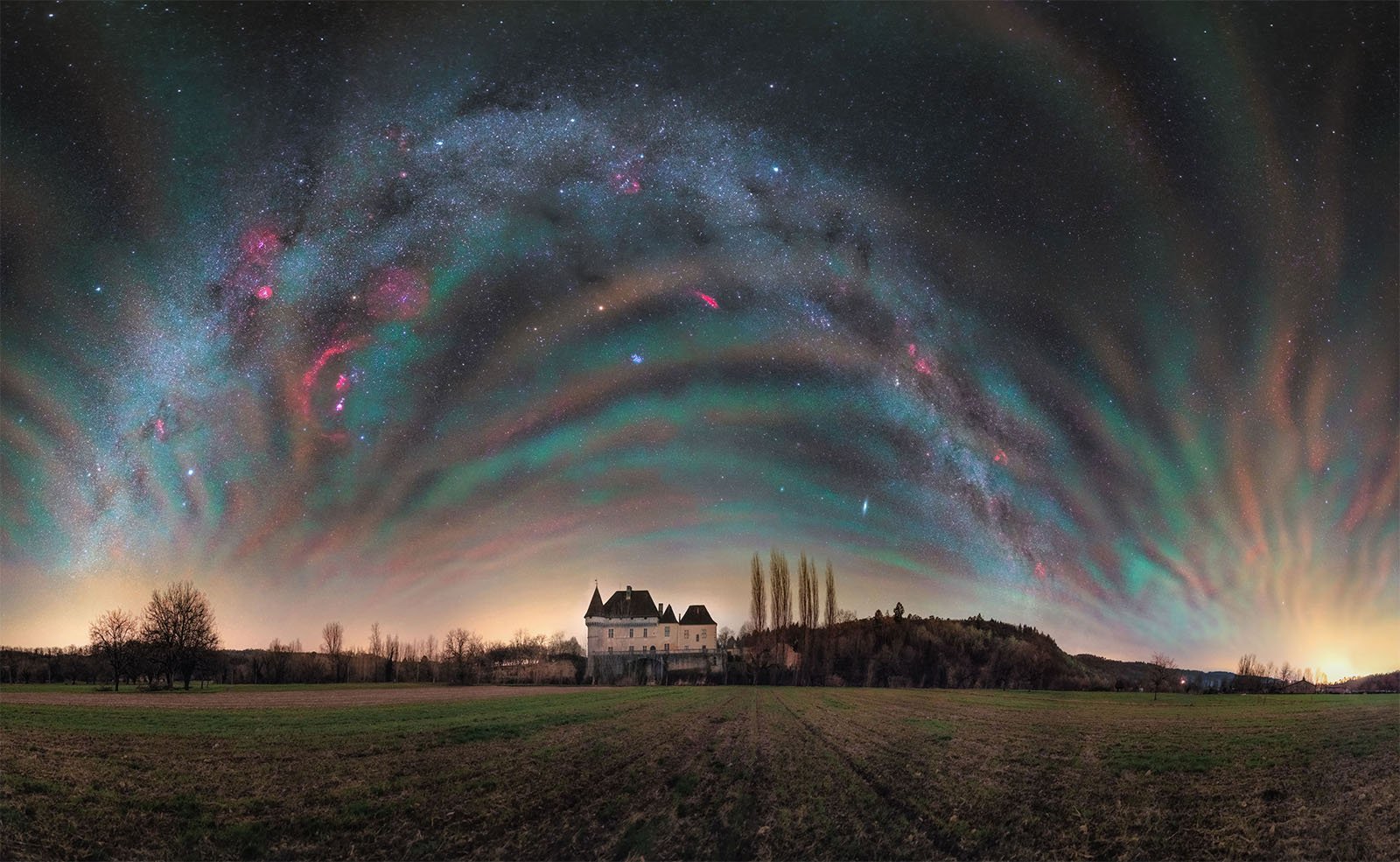
The wide-angle panorama shows, from left to right, Sirius and the Orion constellation, Mars, the Pleiades, the California Nebula, Cassiopeia, the double cluster of Perseus, and Andromeda. The image comprises 40 shots, totaling about an hour of exposure time. Looten used an astro-modified Canon EOS 6D DSLR.
‘Desert Bloom’ by Marcin Zajac
Marcin Zajac ventured to Goblin Valley State Park in Utah to capture this lovely scene of wildflowers, the famous “Three Sisters” hoodoos, and a beautiful Milky Way arch.
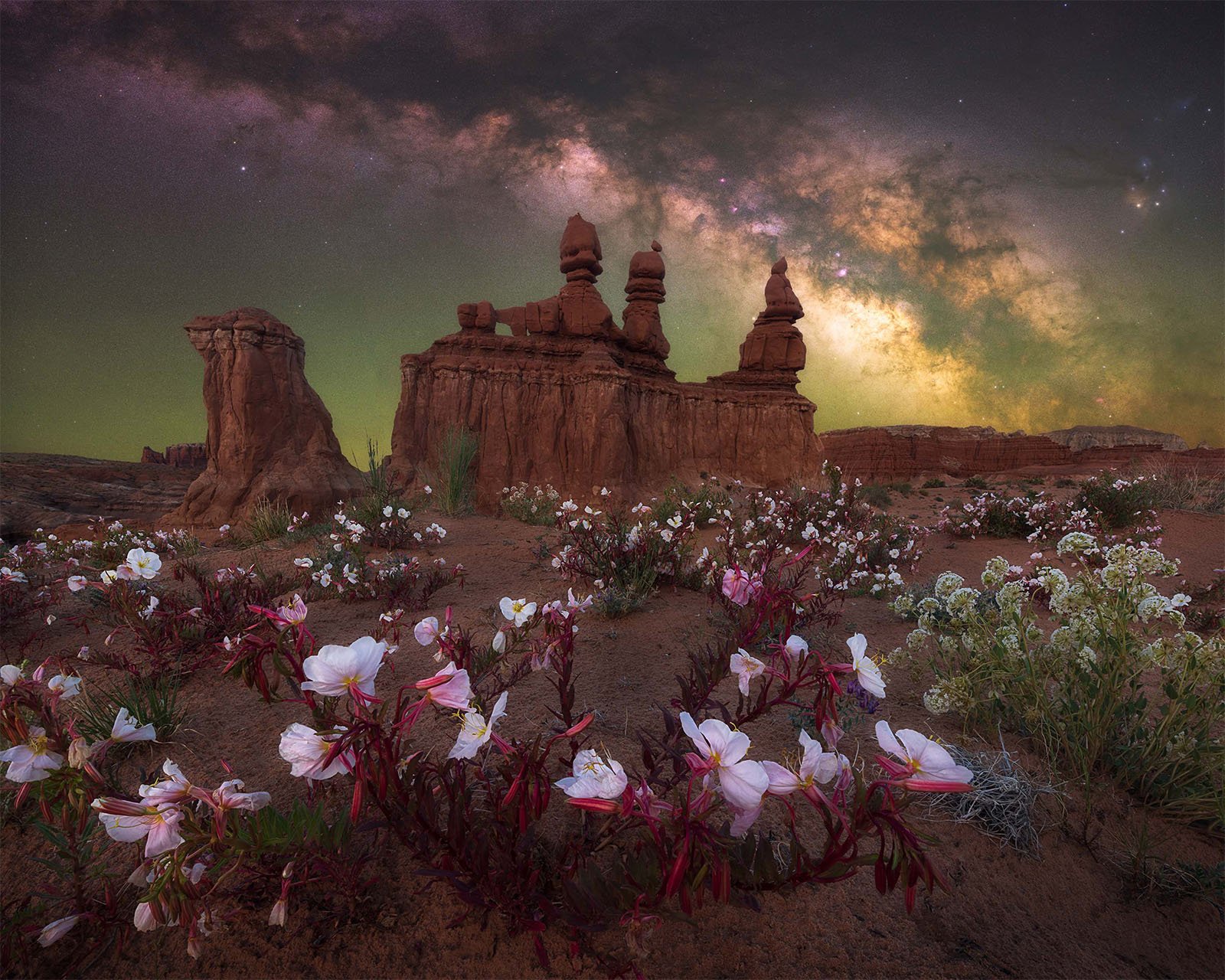
The sky was shot across multiple images for four minutes — star-tracked, of course — and the foreground is a focus-stacked composite.
‘Caradhras — Milky Way Arch Above Vršič Pass’ by Matej Mlakar
This inspiring scene was shot in a mountain pass in the Julian Alps in northwestern Slovenia. The highest pass in Slovenia connects the Upper Carniolo with the Trenta Valley in the Slovene Littoral, per the photographer.
“I knew I wanted to capture probably the last winter Milky Way arch of the season above snow-covered peaks, and this location was a sort of last-minute idea while we were driving towards Vršič Pass. Sometimes it pays off to be a bit more spontaneous,” Mlakar explains.
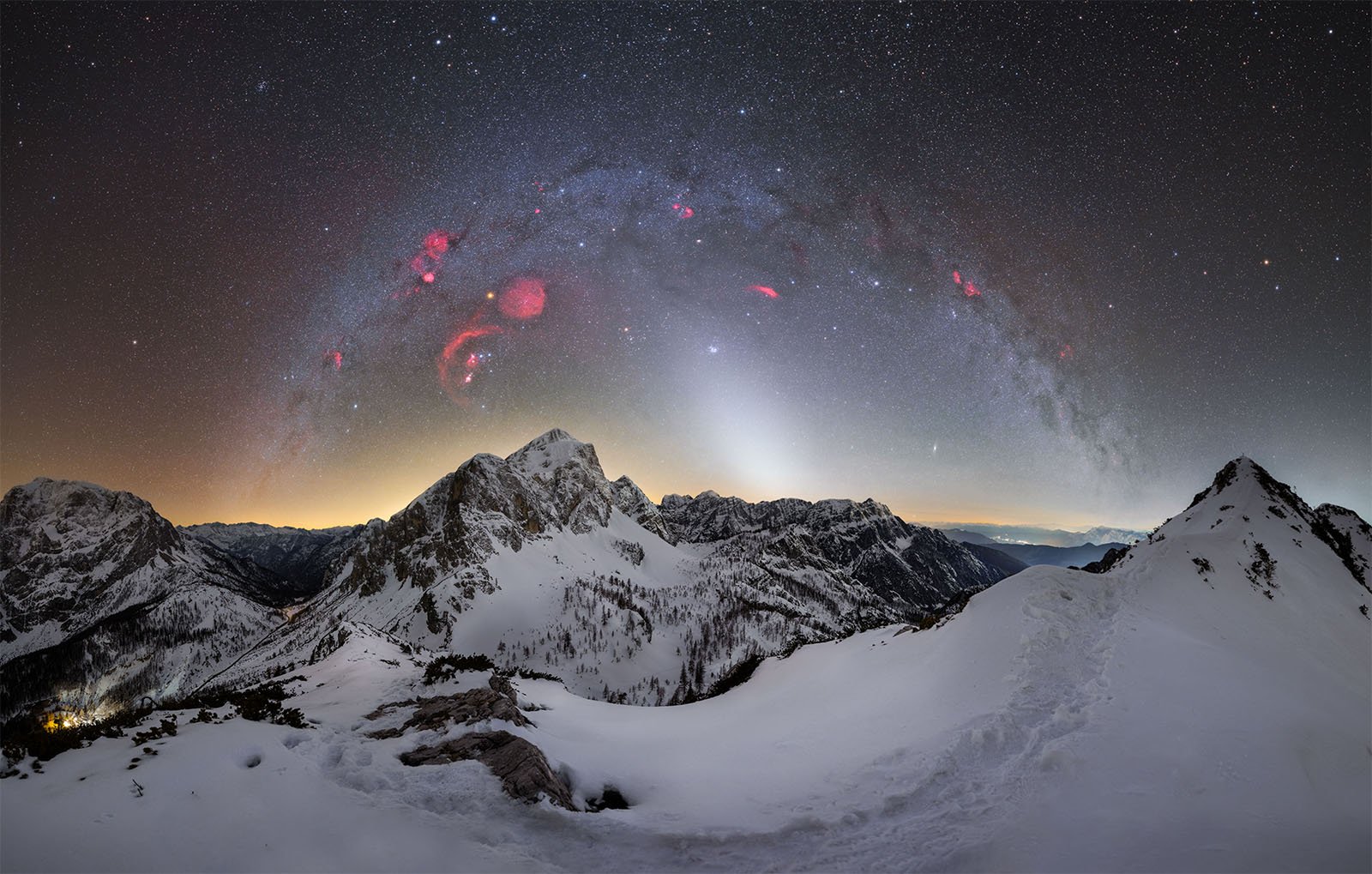
Mlakar used an H-alpha-modified Nikon Z6 mirrorless camera and a 12-nanometer H-alpha clip-in filter to capture the beautiful pink hydrogen emissions in the sky.
‘ Blooming Bottle Tree’ by Rositsa Dimitrova
On the remote island of Socotra in Yemen, Rositsa Dimitrova took full advantage of the remarkably dark skies and iconic bottle trees.
“Visiting Socotra was a dream come true – it had been at the top of my bucket list for a couple of years. The night sky in Socotra is categorized as Bortle 1 on the dark sky scale — the darkest you can possibly get. But it wasn’t just the dark skies — it was the alien-looking foregrounds that truly took my breath away,” says Dimitrova. “The gorgeous bottle trees of Socotra are especially beautiful in full bloom. They only bloom for a few weeks in February and March, and it’s a mesmerizing sight you want to experience again and again.”
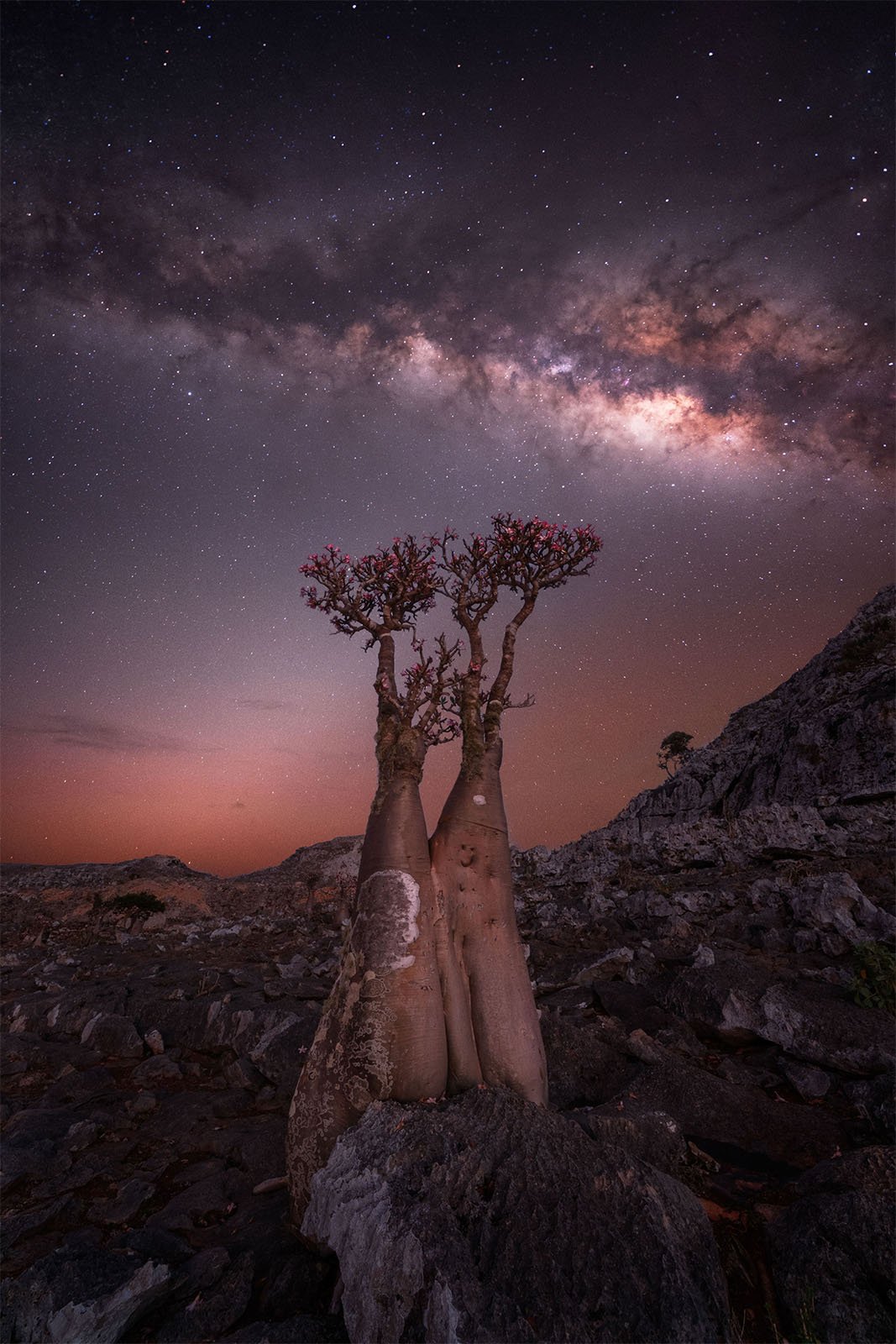
She also shot this while 11 weeks pregnant and admits that “camping and shooting all night” were quite exhausting. “But all the challenges were absolutely worth it,” she adds.
“I’m now dreaming of taking my two daughters to Socotra one day — for an experience they will never, ever forget.”
‘Mungo Dreamtime’ by John Rutter
John Rutter shot this composite image in Mungo National Park in New South Wales, Australia.
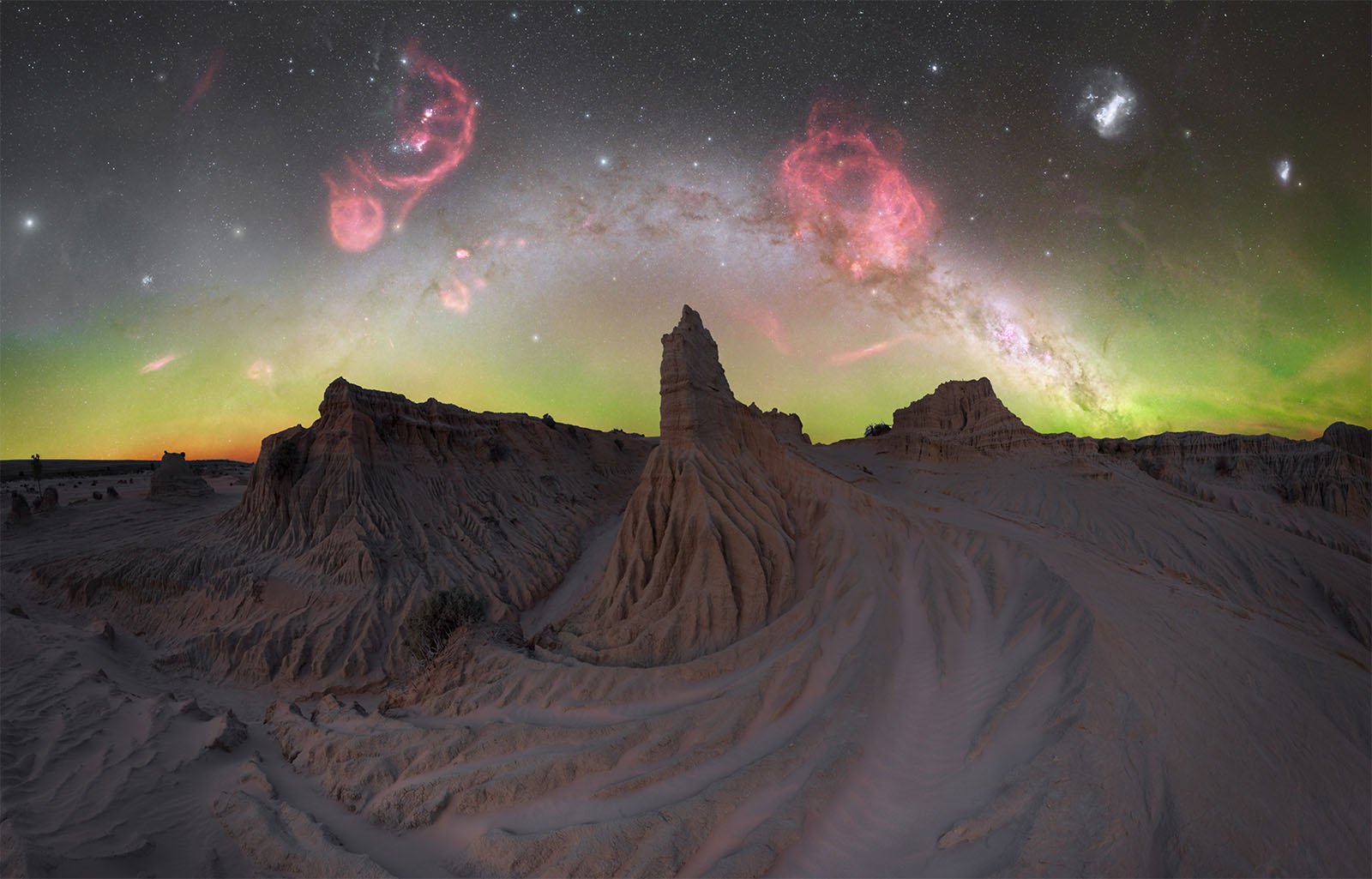
“This Mars-like landscape is the shores of Ancient Lake Mungo, housing the oldest human remains outside Africa — a significant site for all humankind,” explains Rutter.
“Its remote location grants it a Bortle 1 sky, allowing you to stand where the first Australians once did and gaze at the same sky they beheld 100,000 years ago. The beauty of the arid, wind-carved landscape and the untouched sky is only eclipsed by the rich history of this area.”
‘The Vanity of Life’ by Mihail Minkov
Some PetaPixel readers may remember Mihail Minkov’s name, as his work has been featured on the site on numerous occasions. Minkov went to Wadi Rum Desert in Jordan for this shot.
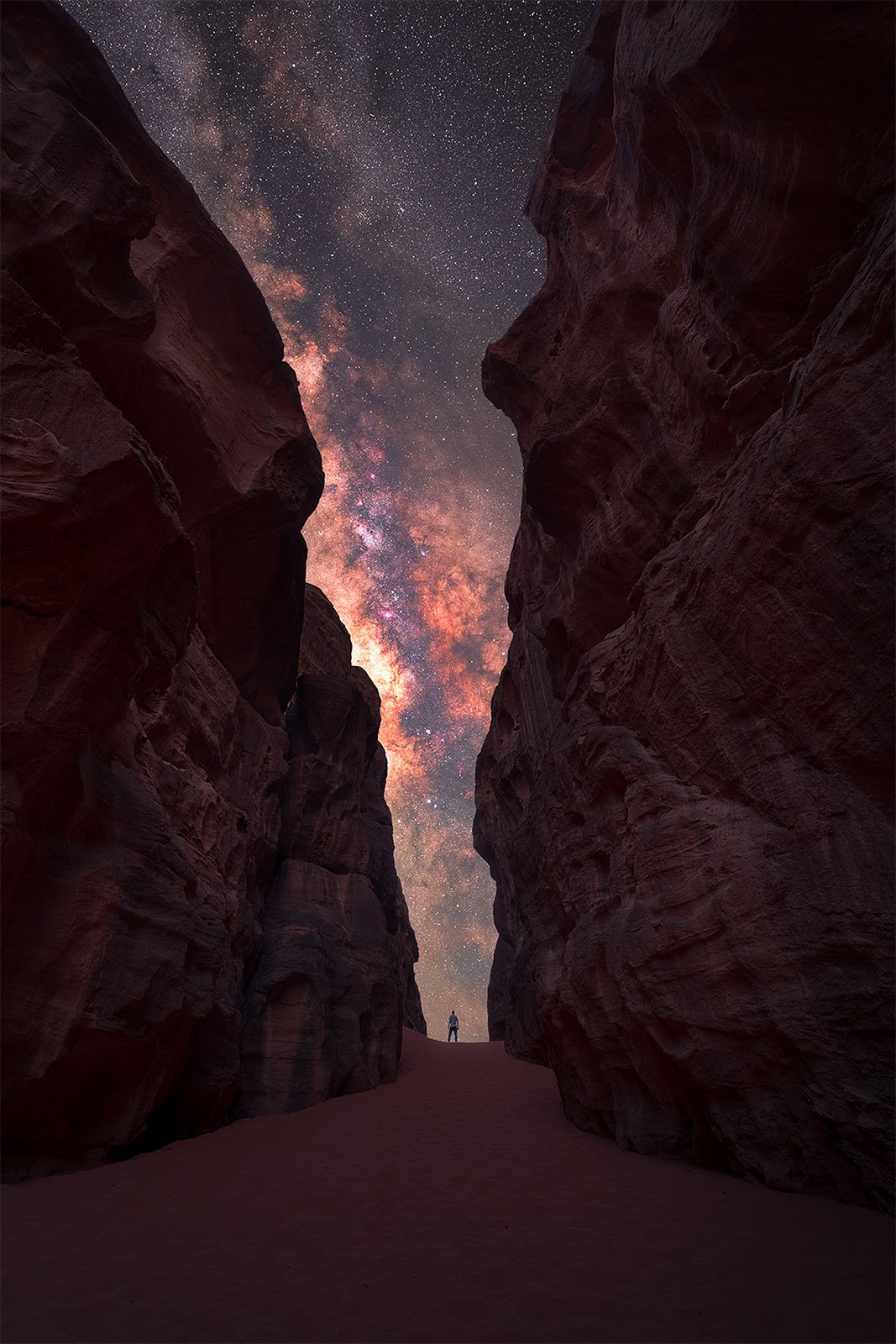
“The concept behind this shot is to highlight the stark contrast between the vastness of the cosmos and the minuscule nature of humanity. The composition intentionally draws the viewer’s focus to a small figure, underscoring our insignificance in the grand scheme of the universe, while the majestic Milky Way core dominates the background,” Minkov explains.
“Whenever I venture out to capture the night sky, I’m filled with a sense of humility and gratitude for my existence. It’s as if my problems diminish in comparison, and I’m reminded of the immense love I have for my family and the beauty of life itself, making everything else seem trivial.”
‘Lupine Dreams’ by Brandt Ryder
There was a record amount of water in the Eastern Sierra Mountains in the winter of 2022-2023, resulting in a remarkable super bloom event. Photographer Brandt Ryder took full advantage and captured this fantastic image last May.
“I knew I wanted to create an image that transported the viewer into a sea of purple flowers framed by the snow-covered Sierra and the Milky Way rising above,” Ryder explains.
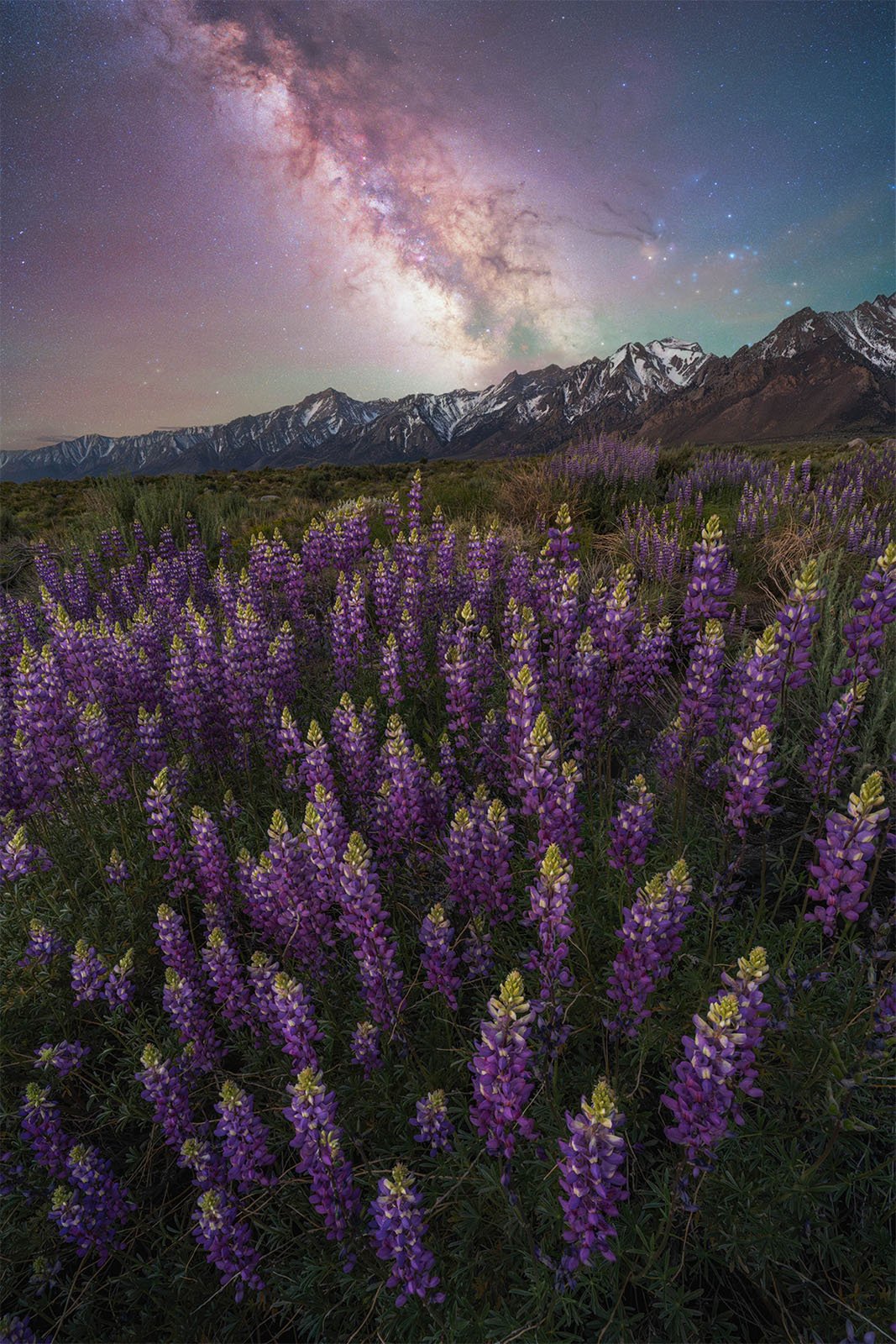
“Although this spot was special, it was the incredible panoply of color in the night sky that I captured on this night that really elevates this image. Every time I look back at this image, I can still smell those flowers, and I’m immediately transported to this special place and time spent with special people,” the photographer continues.
Ryder used an astro-modified Sony a7 III to capture the images for the sky and his a7 IV to create the foreground composite.
‘A Clear Welcome’ by Franceso Dall’Olmo
“This was the first photo I took in Patagonia,” says photographer Franceso Dall’Olmo. Talk about making a solid first impression!
While the region is known for cold, rainy conditions, the photographer was treated to three straight days of clear skies. While cloudy skies can make for lovely sunrises and sunsets, there’s no substitute for clear skies when photographing the incredible Milky Way arch.
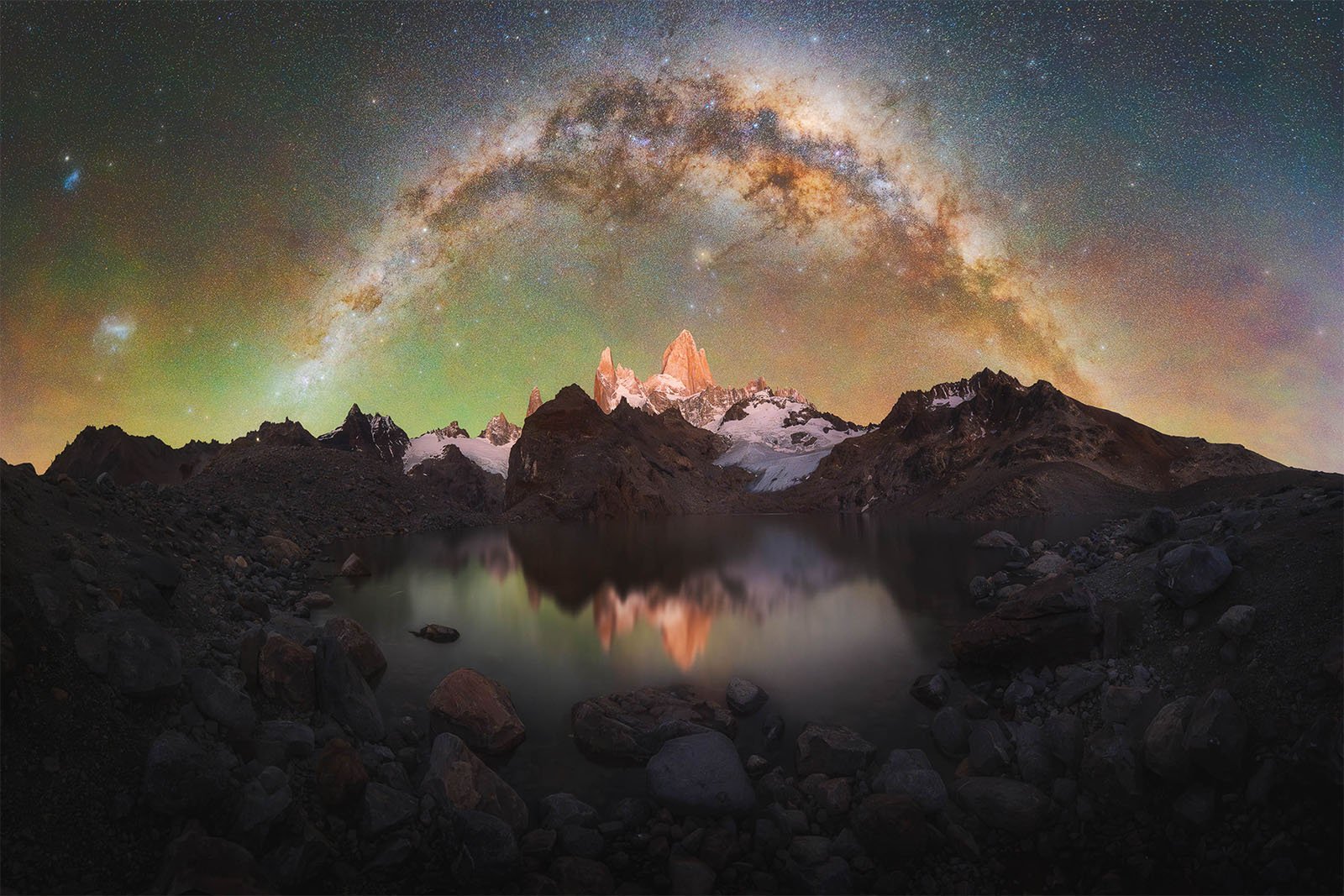
‘The Tajinaste’ by Maximillian Höfling
Photographer Maximilliam Höfling captured this fantastic scene in Tenerife in the Canary Islands.
“In the Teide National Park, situated at an altitude of around 2000 meters, clear skies are almost guaranteed, with lower clouds shielding city lights, minimizing light pollution,” Höfling explains.
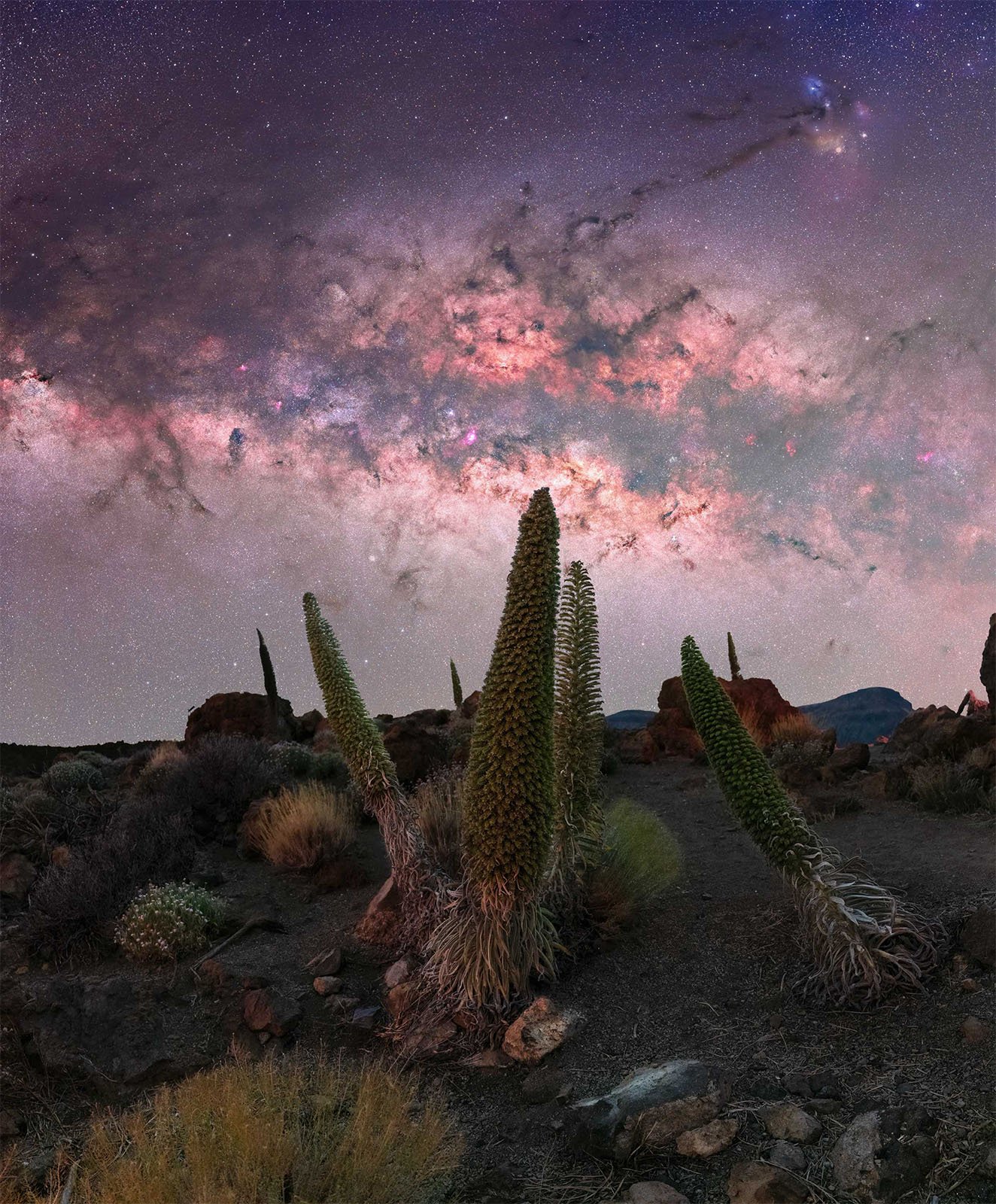
“My primary goal in astrophotography is to unveil the hidden beauty of the night sky beyond the visible stars. I’m especially passionate about showcasing our galaxy, the Milky Way, in all its glory. I believe this picture achieves that goal impressively, capturing the mesmerizing brilliance of the Milky Way against the pristine backdrop of Tenerife’s night sky.”
The composite was captured using an astro-modified Sony a7S and standard a7 III, along with Sigma 24-70mm f/2.8 and 35mm f/1.4 lenses.
‘ Rainbow Valley’ by Baillie Farley
Photographer Baillie Farley shot 70 frames for the sky and 24 images for the foreground to create this composite in the Central Australian Outback.
“This image captures the breathtaking scene at Rainbow Valley Conservation Reserve, where the southern Milky Way gracefully spans above a remarkable formation of colorful sandstone rocks,” says Farley. “This area exudes a unique charm, with its vibrant hues and stunning geological formations creating a mesmerizing landscape.”
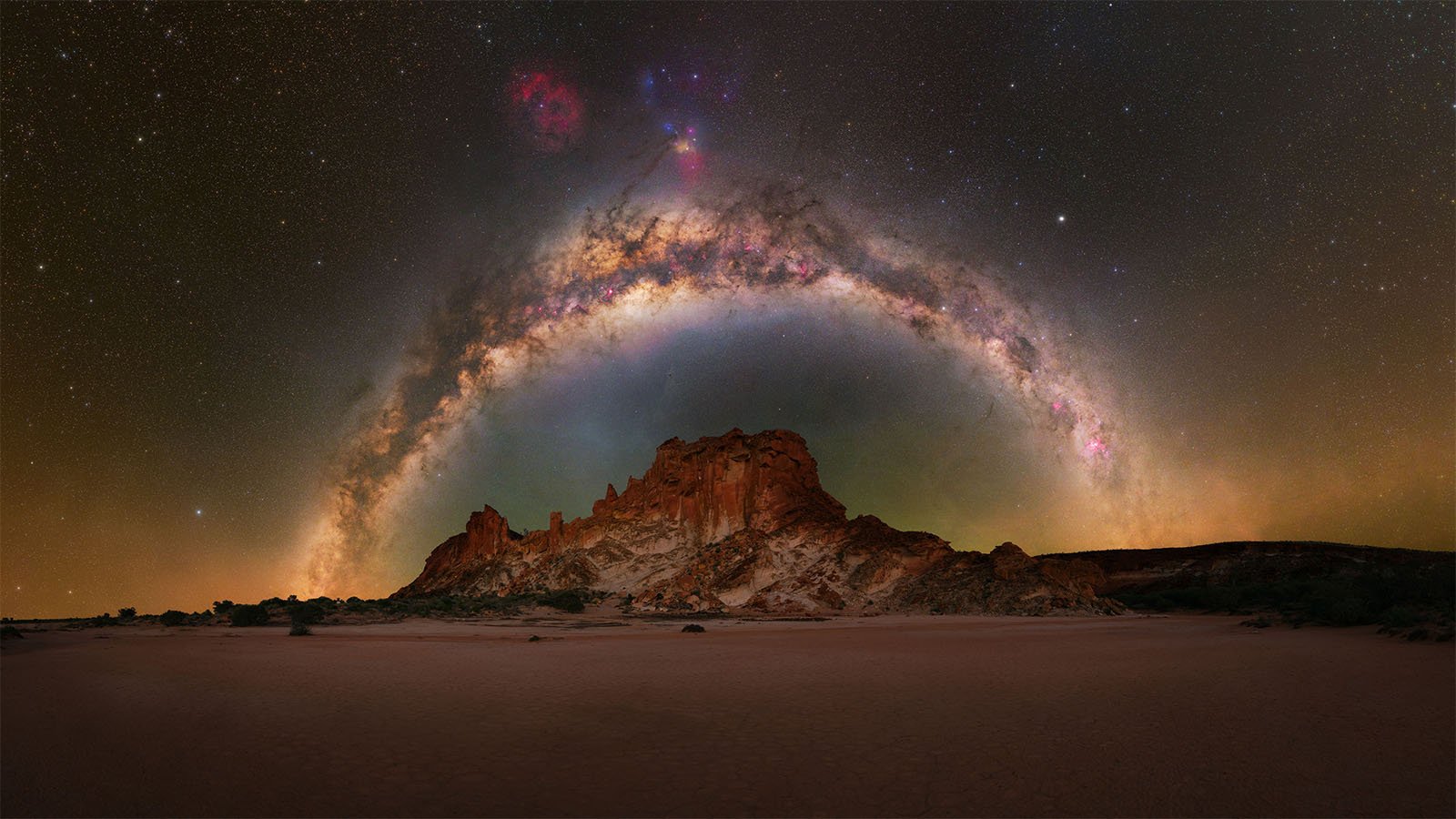
‘ Mother Juniper’ by Benjamin Barakat
Another familiar name in this year’s contest is Benjamin Barakat, who PetaPixel talked to about his incredible experience in Socotra.
For this award-winning shot, Barakat was instead at Jebel Shams in Oman.
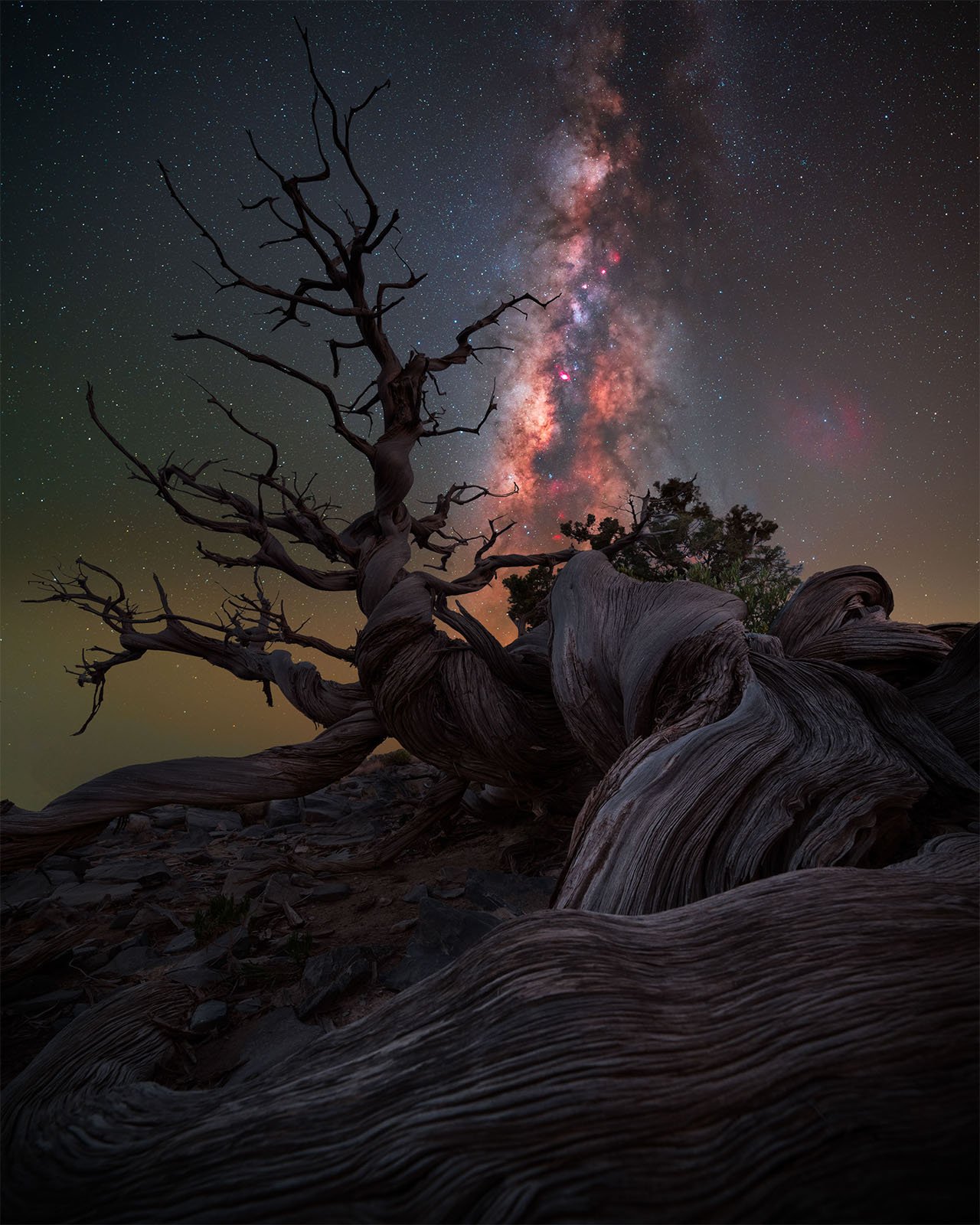
“The wisdom of the juniper reveals itself in its aged roots, twisted and sculpted over millennia, enduring the ravages of time and countless obstacles. Amidst the ever-changing tides of time, one constant remains: its profound connection with the night sky and the Milky Way. Their paths intertwine and converge, culminating in a perfect alignment. In that fated instance, I found myself beneath the juniper’s boughs, gazing up at the cosmic dance above, capturing its essence in the stillness of the night,” Barakat explains.
Barakat shot this composite image using his Sony a7 IV and Sony 12-24mm f/2.8 G Master lens.
More Beautiful Milky Way Photos
The rest of this year’s amazing winning images can be seen on Capture the Atlas. Photographers keen to win next year’s edition of the competition should check out PetaPixel‘s guide “How to Photograph the Milky Way.”
Image credits: Images courtesy of Capture the Atlas. Individual photographers are credited in the image captions.